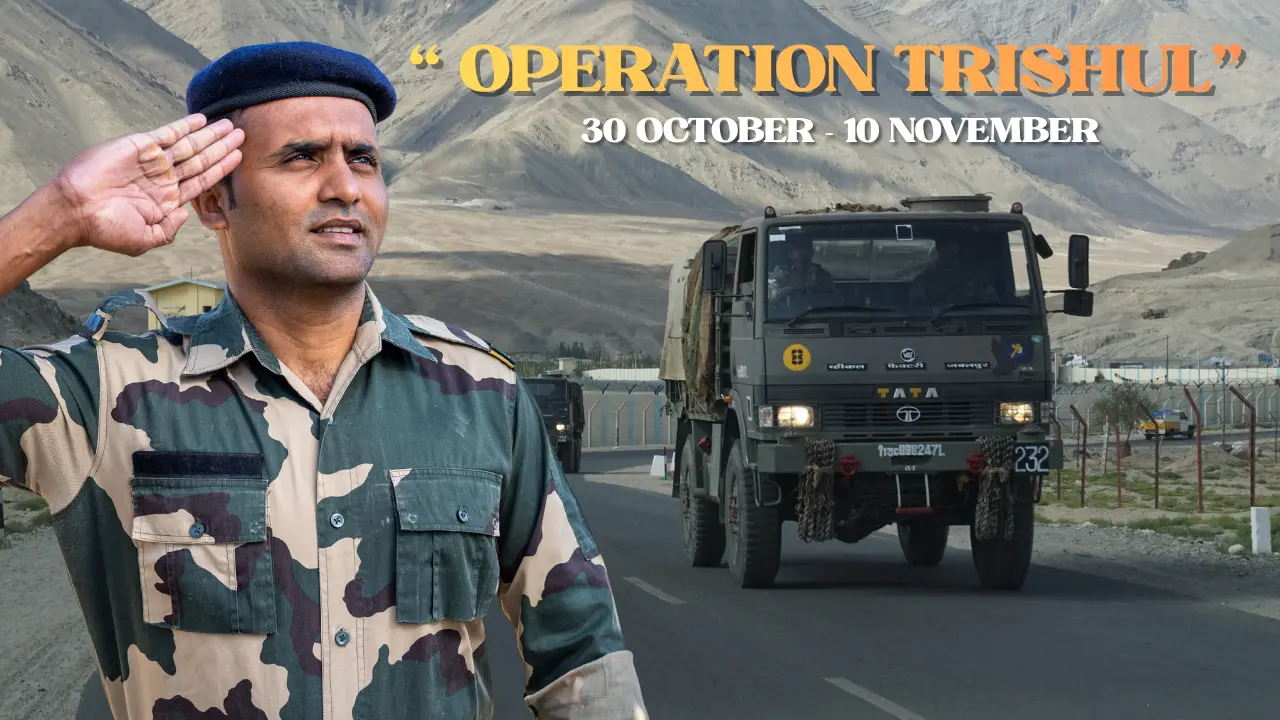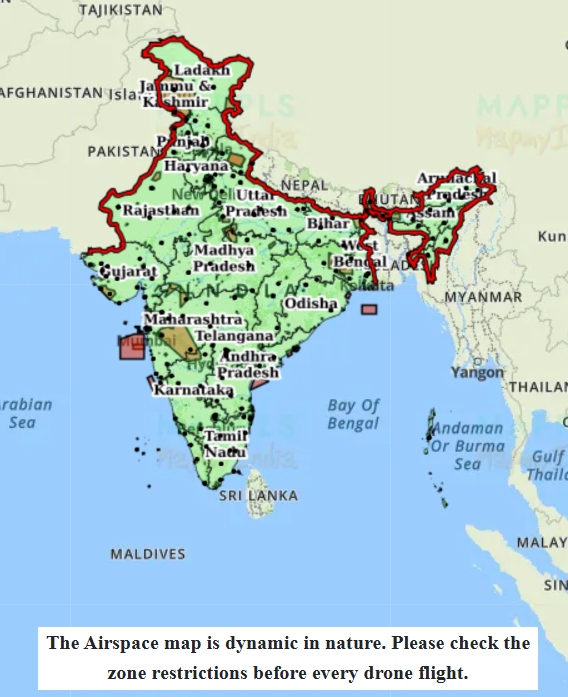Heightened Alert: India’s Tri-Service Drill ‘Trishul’ and the Closing of Pakistan’s Air Corridors
Tensions on the India-Pakistan border have escalated following the announcement of ‘Operation Trishul,’ a massive tri-service military exercise by India’s armed forces. The drill, coupled with an Indian NOTAM (Notice to Airmen), prompted an immediate, nervous reaction from Islamabad, resulting in Pakistan closing its own air corridors. This series of events suggests a significant military maneuver near the sensitive Gujarat and Rajasthan borders, bringing the strategic Sir Creek dispute back into the spotlight.
Operation Trishul: The Context and Scope
Operation Trishul is a Tri-Service Exercise designed to enhance coordination and synergy between the Army, Navy, and Air Force. This joint exercise is scheduled to run from October 30 to November 10, stretching across a vast, critical area from Jaisalmer in Rajasthan to the Rann of Kutch in Gujarat, and extending into the Arabian Sea for naval components.
The Operation Trishul exercise is a high-stakes, real-ground practice involving approximately 30,000 Indian soldiers. It will be actively overseen by the Southern Command, headquartered in Pune, and will test sophisticated military equipment and tactics, including:
- Long-range precision strikes and unified operations.
- Testing of indigenous assets such as the Pinaka rocket launcher, Tejas light combat aircraft, Dhruv helicopters, and K9 Vajra self-propelled howitzers.
- Extensive use of drones, missiles, and electronic warfare systems.
India’s pre-emptive NOTAM served as a necessary warning to commercial air traffic about fighter jets operating at altitudes up to 28,000 feet, signaling a period of intense aerial activity.
Pakistan’s Reaction and the Sir Creek Flashpoint
The notification of India’s drill immediately drew a counter-response from Pakistan, which issued its own NOTAM and restricted its airspace. This move highlights Pakistan’s anxiety over the drill’s location and scale, particularly near the historically disputed Sir Creek region.
Sir Creek is a vital, 90 to 95 km tidal estuary that forms a natural boundary between India’s Gujarat and Pakistan’s Sindh provinces. The disagreement over the demarcation line, ongoing since 1965, is based on differing interpretations of international maritime law:
- Pakistan’s Claim: Argues the boundary should follow the eastern bank of the creek, which would grant it the entire waterway.
- India’s Position: Supports the Thalweg Doctrine, which dictates that the boundary should run through the middle of the waterway, provided it is navigable.
The current military posture follows a period of aggressive posturing, including Defence Minister Rajnath Singh’s recent hard-line statements from the Sir Creek area, where he warned Pakistan of a severe response to any provocation.
Geopolitical Implications and Historical Echoes
The timing of Operation Trishul is crucial, coming shortly after the Prime Minister’s visit to the INS Vikrant and amid deteriorating relations between Pakistan and Afghanistan.
The scale of the mobilization is reminiscent of previous major deployments:
- Operation Sindoor: A prior operation that similarly involved issuing a NOTAM before active military movements.
- Operation Parakram (2001): A massive mobilization following the attack on the Indian Parliament, which was perceived as being on the brink of converting into a full-scale war.
This exercise, conducted with real ammunition and high-level coordination, serves both a defensive purpose testing operational readiness and a clear strategic message of deterrence to Islamabad, forcing a re-evaluation of its defense posture amidst its internal security challenges from groups like the TTP and ongoing issues with Balochistan.










